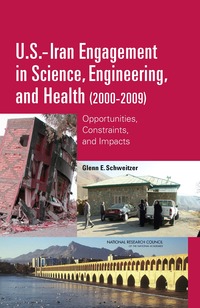On July 14, 2015, the United States, France, the United Kingdom, Germany, Russia, and China (the P5+1) reached a landmark agreement with Iran that strictly limits nuclear-related activities in Iran while calling for bilateral and multilateral collaboration in nuclear science and technology. The NAP report titled U.S.-Iran Engagement in Science, Engineering, and Medicine (2000-2009) summarizes activities of the Academies in bringing together more than 1,000 specialists from about 100 U.S. and Iran academic and research centers in the two countries in nongovernmental workshops, exchanges of individuals, and pilot projects. While the report is devoted primarily to non-nuclear activities, many of the lessons learned have broad applicability in carrying out collaborative programs in a variety of fields under difficult and often unpredictable conditions.
During the first decade of the 21st century, the National Academies, working with a number of partner organizations in Iran, carried out a program of U.S.-Iran engagement in science, engineering, and health (herein referred to as science engagement). This book reviews important aspects of the science engagement program, including: (a) objectives of the program, (b) opportunities and constraints in developing the program, and (c) scientific and political impacts of the activities. Suggestions …
